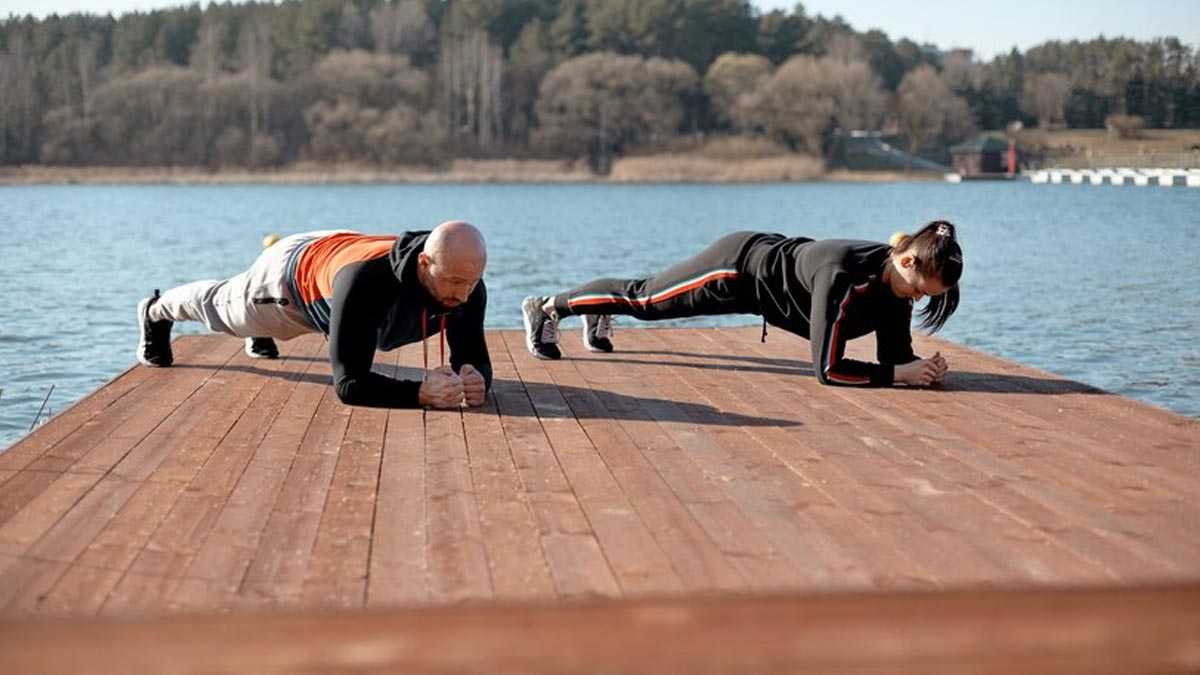
When it comes to building strong and defined abs, people often seek out quick hacks and shortcuts. However, the key to achieving sculpted abs lies in consistent exercise and adopting effective workout techniques. One such exercise that can help you build core strength and develop chiselled abs is the pillar bridge plank. In this article, we will explore why building abs require exercise, what is pillar bridge plank, its benefits and more.
Why Building Abs Requires Exercise?
Building well-defined abs is not just about aesthetics; it is also crucial for functional movement and overall core strength. While diet plays a role in revealing your abdominal muscles by reducing body fat, exercise is essential for building and toning the underlying muscle. Contrary to quick-fix gimmicks, consistent exercise is the key to achieving lasting results. Exercises like the pillar bridge plank target the core muscles directly, helping to develop strength and definition in the abdominal region.

What Is The Pillar Bridge Plank?
The pillar bridge plank, also known as the high plank or forearm plank, is a static exercise that involves maintaining a straight body position while supporting your weight on either your forearms or hands and toes. It primarily targets the core muscles, including the rectus abdominis, transverse abdominis, and obliques, while also engaging the muscles of the shoulders, arms, and legs.
Also Read: 6 Plank Variations & Step-By-Step Guide Of Doing Them
Benefits Of Doing Pillar Bridge Planks
1) Enhanced Core Strength
The pillar bridge plank is one of the most effective exercises for building core strength. Engaging the deep core muscles strengthens the abdominal muscles and stabilises the spine, leading to improved posture and reduced risk of back pain.
2) Defined Abs
Consistently performing pillar bridge planks can help sculpt and define your abdominal muscles. As you strengthen the core muscles, you increase the visibility of the underlying abs, leading to a toned and chiselled midsection.

3) Improved Stability And Balance
The exercise challenges the muscles of the shoulders, arms, and legs, leading to improved overall stability and balance. This has significant implications for various activities, including sports performance and everyday movements.
4) Increased Endurance
Holding the pillar bridge plank requires sustained muscular effort, leading to improved muscular endurance over time. This increased endurance allows you to perform physical activities for longer periods with reduced fatigue.
5) Low Impact
The pillar bridge plank is a low-impact exercise that puts minimal strain on your joints, making it suitable for individuals with joint issues or injuries.
What Should Be The Ideal Duration For Pillar Bridge Plank?
The ideal duration for holding a pillar bridge plank varies depending on your fitness level and goals. Beginners may start with shorter durations, aiming for 20-30 seconds, and gradually progress to longer times as their core strength improves. Intermediate and advanced individuals may aim for 45-60 seconds or even longer.
Tips To Incorporate Pillar Bridge Planks Into Your Workout
1) Start Slow
Begin by practising it every alternate day, aiming for lower durations and progressively increasing the time as your core strength develops. Make sure to not compromise with your form.
Also Read: Plank Exercise: The Right Way To Do Planks, Types Of Planks And Precautions For Maximum Benefits
2) Combine With Other Exercises
To achieve overall abdominal development, complement pillar bridge planks with exercises that target different areas of the core, such as bicycle crunches, Russian twists, or leg raises.
3) Variation
Once you have mastered the basic plank, you can incorporate variations such as side planks, plank rotations, or elevated planks to challenge your muscles in different ways and prevent monotony.
Image Credit: Freepik







